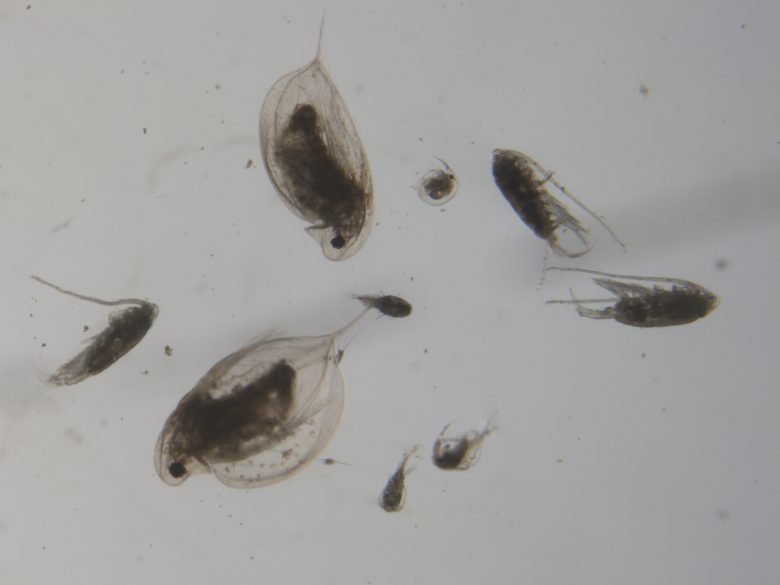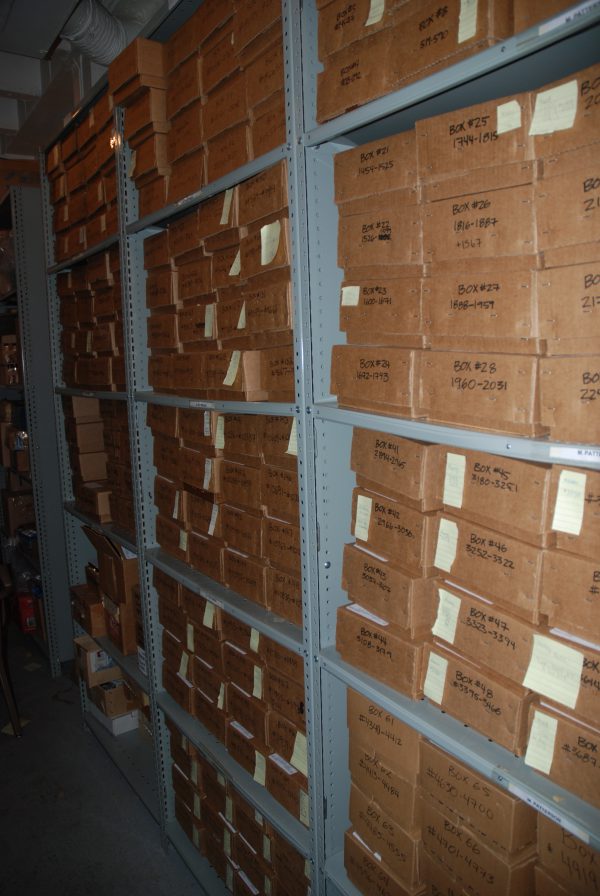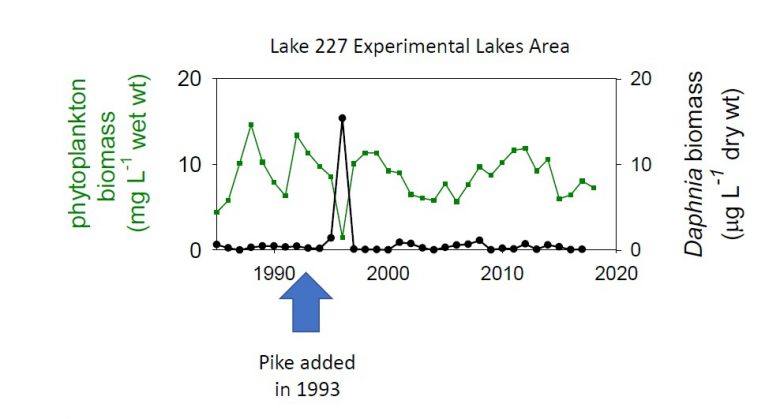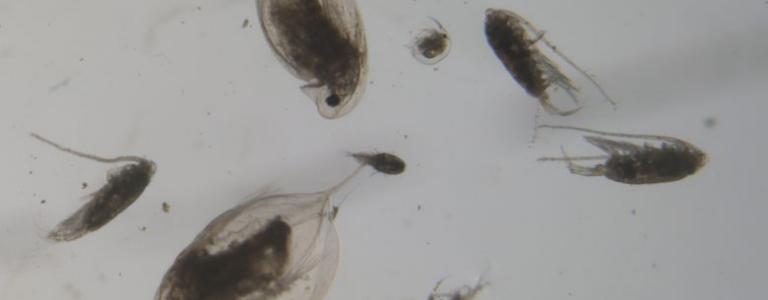Zooplankton and Fresh Water: Here are the facts
Zooplankton are critical parts of freshwater ecosystems, but often get forgotten. Scientist Mike Paterson explains what zooplankton are, and why they matter.
Whenever I speak to the public as a researcher on water quality, I often hear four big questions:
- Can I drink the water?
- Can I safely swim in the water?
- Will I be able to catch fish?
- Can I safely eat the fish?
Conspicuously absent from these questions is any mention of zooplankton; in fact, I suspect most people don’t know what they are.
Given that I have spent so much of my research career studying them, I want to explain what zooplankton are and why they matter.
What are zooplankton?
Zooplankton are small animals that live in the water column of almost all water bodies, including oceans, lakes and ponds, although they mostly cannot survive in rivers and streams.
They range in size from a few millimetres down to a few microns (one micron is equal to 1/1000 of a millimetre) and may include the larval stages of larger animals such as mussels and fish.

In lakes and ponds, the most common groups of zooplankton include Cladocera and Copepods (which are both micro-crustaceans), rotifers and protozoans. Most lakes will have 40 or more species of zooplankton common to them.
Zooplankton occupy the centre of the open-water food web of most lakes. They eat bacteria and algae that form the base of the food web and, in turn, are heavily preyed upon by fish, insects and other zooplankton. Many zooplankton have clear shells to avoid being seen by visual feeders, such as fish.
In keeping with their taxonomic diversity, zooplankton use a variety of feeding strategies, and they may eat bacteria, algae, other zooplankton and can even be parasites. Some zooplankton, like many Cladocera, are indiscriminate grazers, using their feeding appendages like rakes to filter particles from the water. Other zooplankton, such as many Copepods, are more selective and pick out individual particles or zooplankton prey based on their size, shape and taste.

Why are zooplankton important?
As a result of their central position in lake food webs, zooplankton can strongly affect water quality, algal densities, fish production, and nutrient and contaminant cycling.
Zooplankton are commonly included in biomonitoring programs because their densities and species composition can be sensitive to changes in environmental conditions.
In recent years, many species of zooplankton have been accidentally introduced to Canadian lakes and rivers from Europe and elsewhere, including the spiny water flea (Bythotrephes) and the larval stages of zebra mussels. Occasionally, some species of zooplankton, such as Mysis, have been deliberately introduced to lakes to enhance fish production.
Learning more about the importance and role of zooplankton
Because of the important role that zooplankton play in freshwater food webs, we have been collecting and studying them at IISD-ELA for our entire 51-year history—in fact, our zooplankton collection now exceeds 30,000 samples.
Let’s take a look at some examples from the last half a century that illustrate the importance of zooplankton.
CAN INCREASING ZOOPLANKTON POPULATIONS TACKLE ALGAL BLOOMS?
ELA was originally founded in 1968 to address problems associated with excessive algal blooms, which are unsightly, may cause fish kills and can result in the development of toxins. This process, known as eutrophication, is caused by high inputs of nutrients and plagues millions of lakes globally.
Because zooplankton eat algae, it has been proposed that it may be possible to control algal blooms by increasing zooplankton grazing. This method is called “biomanipulation” and is usually done by reducing predation on zooplankton by planktivorous fish either by directly removing these fish or adding a fish predator such as pike.
We tested the effectiveness of the latter method (commonly used in Europe) in the 1990s by adding pike to eutrophic Lake 227. Following the pike introduction, minnows were extirpated, densities of a zooplankton called Daphnia increased dramatically and algal densities decreased considerably. Unfortunately, algal densities remained low for only one year and the lake rapidly rebounded to its former eutrophic state.

This research, in conjunction with other studies, suggested that biomanipulation can effectively reduce algae in the short term, but may be less effective as a long-term solution for eutrophication. Ultimately, biomanipulation is most effective when combined with nutrient reduction strategies.
HOW DO CHANGES IN ZOOPLANKTON CAUSED BY ACID RAIN AFFECT FISH POPULATIONS?
In the 1960s and 70s, we set our sights on exploring how acid rain was affecting freshwater lakes and fish.
Following additions to Lake 223 of sulphuric acid to mimic acid rain, numbers of Mysis diluviana, a common zooplankton taxon, declined dramatically and were eventually eliminated from the lake. Mysis are important food for lake trout and the trout subsequently starved and their numbers and growth rates declined.”
In Lake 223, the toxic effects of lake acidity were not directly responsible for the declines in trout; instead, trout declined because of indirect effects mediated through the food web. Recognition of the importance of these indirect effects is one of the reasons why whole-ecosystem manipulations that incorporate intact food webs are so important. Although researchers stopped adding acid to Lake 223 after 1993 and the lake has fully recovered chemically, Mysis have still not reestablished and trout numbers and growth rates remain low.
As a result, our researchers are now reintroducing Mysis to Lake 223 in the hope of fully restoring the trout populations.
HOW DOES ZOOPLANKTON AFFECT THE AMOUNT OF MERCURY IN FISH?
Mercury (especially methylmercury) is by far the most important contaminant of freshwater fish and high exposures can have harmful effects on humans who consume it. Consequently, considerable research at IISD-ELA has explored this important contaminant.
In the 1990s, research at the site and elsewhere demonstrated that fish get almost all their methylmercury from their food, similar to humans. Because zooplankton are important prey for many fish, it is therefore important to follow and understand changes in methylmercury in zooplankton.
For example, in a series of artificially created reservoirs at the site, we found that concentrations of methylmercury in zooplankton increased by five times or more following impoundment. These increases were most strongly affected by increases in methylmercury in water but were also affected by changes in water chemistry and zooplankton species composition.
You might also be interested in
For Nature-Based Solutions to Be Effective, We Need to Work with Indigenous Peoples and Local Communities
Nature-based solutions have been praised as a promising approach to tackling the twin crises of climate change and biodiversity loss. But some Indigenous Peoples and local communities are questioning the legitimacy of the concept and what it symbolizes. It is time to listen to what they have to say.
Northwest Ontario Side Story: IISD Experimental Lakes Area Annual Report 2022-2023
This year's annual report is a celebration of all things creative at the world's freshwater laboratory, from the science to music, photography and theatre.
Freshwater connectivity can transport environmental DNA through the landscape
A new study conducted at IISD-ELA found that the movement of water between freshwater bodies can transport eDNA which complicates the question of how accurately it can be used to monitor species.
Microplastics now pervasive in Great Lakes, with 90% of water samples surpassing safe levels for aquatic wildlife: new studies
Data spanning the last ten years reveal that the Great Lakes basin is widely contaminated with microplastics, with potentially dangerous consequences for the wildlife that live within.
